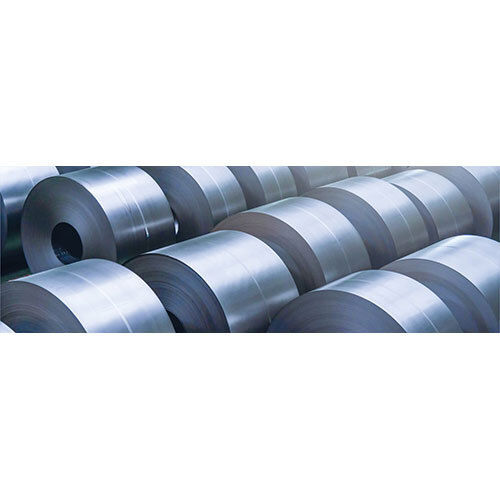Cold Rolled Coil
Product Details:
- Product Type Cold Rolled Coil
- Size Different Size Available
- Color Silver
- Usage Industrial
- Click to View more
Cold Rolled Coil Price And Quantity
- 5 Ton
- 62 INR/Kilograms
Cold Rolled Coil Product Specifications
- Industrial
- Cold Rolled Coil
- Different Size Available
- Silver
Cold Rolled Coil Trade Information
- 5000 Ton Per Month
- 7 Days
Product Description
The cold-rolling process has several advantages over hot-rolling:
- Improved surface finish: Cold-rolled steel tends to have a smoother surface finish compared to hot-rolled steel due to the absence of scale and other surface imperfections.
- Tighter tolerances: Cold-rolling allows for tighter dimensional tolerances and greater precision in thickness control, making it suitable for applications where precise dimensions are required.
- Increased strength: Cold-rolling can increase the strength and hardness of the steel through work hardening, which occurs as a result of the deformation during the rolling process.
- Better formability: Cold-rolled steel is often more ductile and easier to work with compared to hot-rolled steel, making it suitable for applications requiring complex shapes or forming operations.
- Cold-rolled steel is commonly used in a variety of industries, including automotive, construction, appliances, and manufacturing, where its excellent surface finish, dimensional accuracy, and mechanical properties are valued. It is used in products such as automotive body panels, appliances, furniture, and structural components.
- Cold-rolled steel is available in various grades, each designed for specific applications and with different mechanical, chemical, and metallurgical properties. Some common cold-rolled steel grades include
SPECIFICATION
Grade 1008: This is a commonly used grade with good formability and weldability. It's suitable for applications where surface finish and dimensional tolerances are not critical.
Drawing Quality Steel: Grade 1006: Known for its excellent drawing and forming capabilities, this grade is often used in automotive components, appliances, and other applications requiring deep drawing.
Deep Drawing Quality Steel: Grade 1006, 1008, 1010: These grades offer superior formability and are specifically designed for deep drawing applications where intricate shapes are required, such as automotive body panels and kitchen appliances.
Extra Deep Drawing Quality Steel: Grade 1006, 1008: These grades offer even higher levels of formability than standard drawing quality steel and are suitable for more complex deep drawing operations.
High Strength Low Alloy (HSLA) Steel: Grades such as 1018, 1020, 1022, 1025, 1026: These grades contain small additions of alloying elements such as vanadium, niobium, or titanium, which enhance strength, toughness, and weldability. They are used in applications requiring higher strength and reduced weight, such as structural components and automotive parts.
Dual Phase Steel: Grades such as DP500, DP600, DP780: These grades are characterized by a microstructure consisting of a mixture of ferrite and martensite phases, providing a combination of high strength and good formability. They are commonly used in automotive structural components.
Bake Hardenable Steel:
Grade BH210, BH220, BH240: These grades are designed to undergo a bake-hardening process after forming, which increases strength through the formation of strain-induced martensite during baking. They are used in automotive applications for improved dent resistance.
Electrogalvanized Steel: Grades such as SECC, SECD, SECE: These grades are cold-rolled steel sheets or coils that have been coated with a thin layer of zinc through an electroplating process. They offer enhanced corrosion resistance and are used in applications requiring a decorative finish or protection against corrosion.
These are just a few examples of cold-rolled steel grades commonly used in various industries. The selection of the appropriate grade depends on factors such as the desired mechanical properties, formability, surface finish, and specific application requirements.

Price:
- 50
- 100
- 200
- 250
- 500
- 1000+






 Send Inquiry
Send Inquiry Send SMS
Send SMS Call Me Free
Call Me Free
